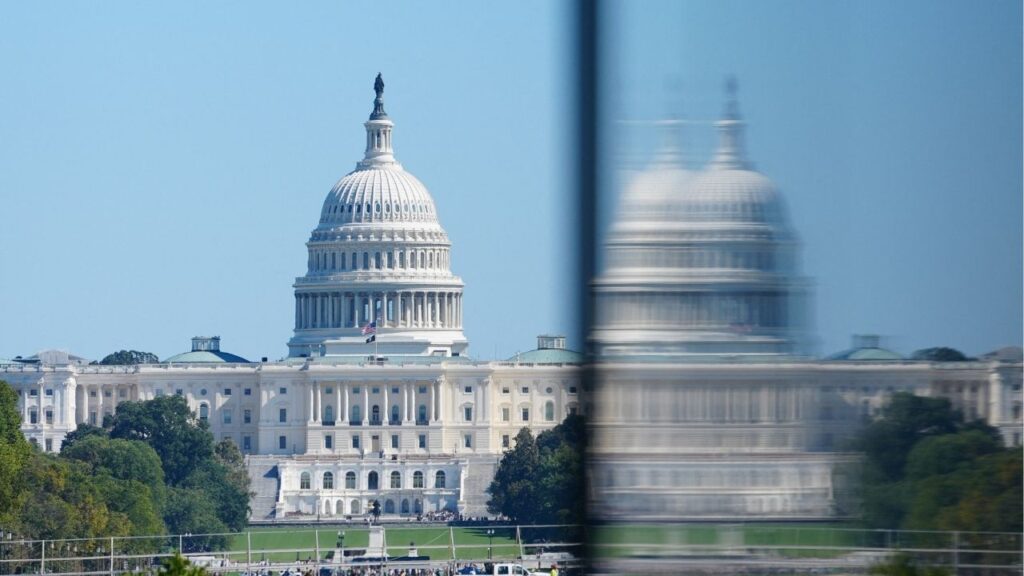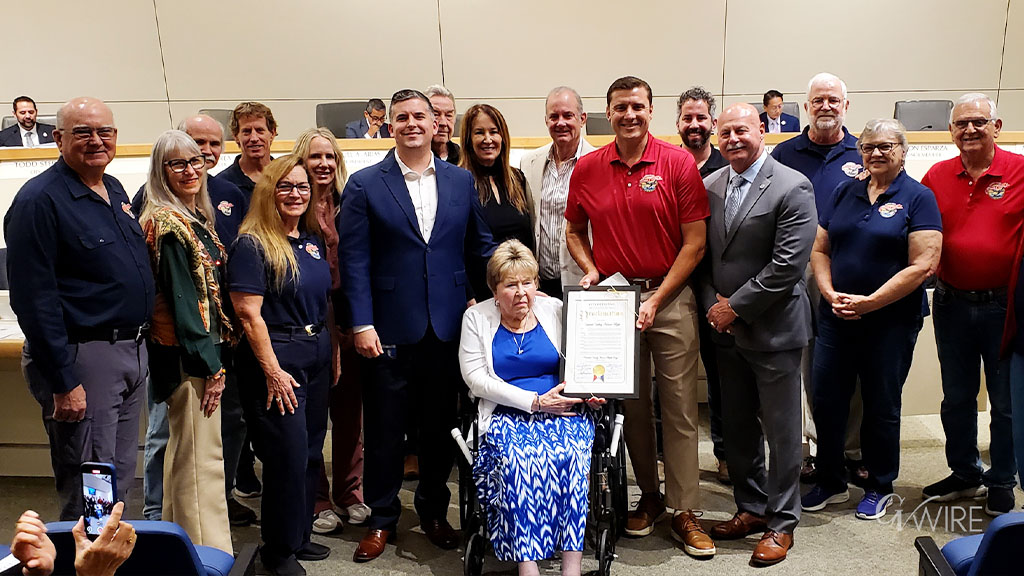Drug ads flood TV and social media, using upbeat imagery to downplay risks and inflate benefits. (Pfizer/YouTube/Screengrab)

- U.S. and New Zealand are the only countries that allow direct-to-consumer drug advertising, with companies spending over $1 billion monthly.
- FDA's attempts to regulate drug ads have been thwarted by industry lawsuits and vague guidelines on what constitutes misleading content.
- Experts suggest stricter truth-in-advertising standards and prominent risk warnings to curb the proliferation of prescription drug ads.
Share
|
Getting your Trinity Audio player ready...
|
Triumphant music plays as cancer patients go camping, do some gardening, and watch fireworks in ads for Opdivo+Yervoy, a combination of immunotherapies to treat metastatic melanoma and lung cancer.
Ads for Skyrizi, a medicine to treat plaque psoriasis and other illnesses, show patients snorkeling and riding bikes — flashing their rash-free elbows. People with Type 2 diabetes dance and sing around their office carrels, tipping their hats to Jardiance. Drugs now come with celebrity endorsements: Wouldn’t you want the migraine treatment endorsed by Lady Gaga, Nurtec ODT?

Elisabeth Rosenthal
Analysis
KFF Health News
Drug ads have been ubiquitous on TV since the late 1990s and have spilled onto the internet and social media. The United States and New Zealand are the only countries that legally allow direct-to-consumer pharmaceutical advertising. (The European Union was furious when Lady Gaga’s Instagram post promoting the migraine drug was visible on the continent, noting it flagrantly violated its ban on direct-to-consumer advertising.)
Manufacturers have spent more than $1 billion a month on ads in recent years. Last year, three of the top five spenders on TV advertising were drug companies.
FDA Struggles to Rein in Pharmaceutical Marketing
Such promotion was banned until 1997, when the FDA reluctantly allowed pharmaceutical ads on TV, so long as they gave an accurate accounting of a medicine’s true benefits and risks, including a list of potential side effects.
With those guardrails in place, few thought advertising would take hold. But the FDA underestimated the wiliness of the pharmaceutical industry, which invented a new art form: finding ways to make their wares seem like joyous must-have treatments, while often minimizing lackluster efficacy and risks.
A 2023 study found that, among top-selling drugs, those with the lowest levels of added benefit tended to spend more on advertising to patients than doctors. “I worry that direct-to-consumer advertising can be used to drive demand for marginally effective drugs or for drugs with more affordable or more cost-effective alternatives,” the study’s author, Michael DiStefano, a professor of clinical pharmacology at the University of Colorado, said in an email.
Related Story: FDA Approves Updated COVID-19 Vaccines, Shots Should Be Available in Days
Indeed, more than 50% of what Medicare spent on drugs from 2016 through 2018 was for drugs that were advertised. Half of the 10 drugs that the Joe Biden-Kamala Harris administration targeted for drug price negotiation this year are among the drugs with the largest direct-to-consumer ad spend.
The government has, in recent years, tried to ensure that prescription-drug advertising gives a more accurate and easily understood picture of benefits and harms. But the results have been disappointing. When President Donald Trump’s administration tried to get drugmakers to list the price of any treatments costing over $35 on TV ads, for example, the industry took it to federal court, saying the mandate violated drugmakers’ First Amendment rights. Big Pharma won.
Last November, the FDA issued requirements that ads give consumers a “non-misleading net impression about the advertised drug.” The agency stated that information had to be presented in a “clear, conspicuous, and neutral manner.” Ads must avoid “audio or visual elements that might interfere with the consumer’s understanding” and “text information is presented in a way that is easy to read.”
But the language is disappointingly vague: What do “neutral” and “non-misleading” mean? Do the proscribed audio-visual elements include people hiking, or dancing to upbeat music? How quickly or slowly can the chyrons listing adverse reactions scurry across your screen? There is no FDA police force to decide how the language should be interpreted.
Are the Blizzards of Ads Here to Stay?
I asked the agency for an interview to get some clarity on its plans, but instead got a three-page email that, well, left me worrying that the blizzard of drug ads is here to stay.
It told me that ads are not vetted before airing unless the manufacturers voluntarily submit them because it is “the drugmakers’ responsibility to make sure they comply.” How do they catch ads that are noncompliant? Often, via consumer complaints, or when an agency staff member sees a booth with misleading information at a conference, the email said.
Within the FDA’s watchdog arm, the Advertising and Promotional Labeling Branch, “there are currently nine full-time employees, and a small percentage of their work includes review of DTC promotional communications, as well as other activities,” according to the agency email. If ads are determined to be noncompliant, the FDA can notify the manufacturer by sending it an “untitled or warning letter.” From 2019 to 2024, it sent a total of just 32.
The FDA launched the Bad Ad Program to help physicians recognize false and misleading promotions directed toward them. It created a one-hour course with case studies, and gave doctors an easy way to report abuse, by calling 855-RX-BADAD. But it’s too early to say whether doctors, who dislike such ads too, will use the hotline, and the agency is woefully understaffed to monitor it.
Related Story: FDA Approves Second Drug to Modestly Slow Alzheimer’s Disease
The FDA has set up a parallel site aiming to teach consumers to better discern whether an ad follows the rules, and to help them discern if a medicine is “right for you.” That, however, requires medical knowledge that most people don’t have.
The Federal Trade Commission, which oversees ads in other sectors — from banking to contact lenses — is more active in suing to halt those it considers deceptive or misleading. In recent years, it sued to prevent unsupported claims on stem cell treatments for arthritis and false or misleading information about some health insurance plans. But it has no jurisdiction over direct-to-consumer drug advertising, a commission spokesperson said.
Calls Grow for Stricter Advertising Regulations
In a long-ago era when cures were mostly sold by “snake oil” salespeople, the 19th-century psychologist William James derided “the medical advertisement abomination” and wrote that “the authors of these advertisements should be treated as public enemies and have no mercy shown.” As scientific understanding has matured, and today’s drugs have alleviated suffering and even saved lives, a more nuanced approach is, of course, in order.
Common sense and the sort of truth-in-advertising standard we apply in other sectors could be a suitable first step. Take ads that promise patients with advanced cancers “a chance to live longer.” A more truthful ad might say that studies are equivocal or, as the widower of one patient drawn in by an ad wrote in an op-ed article: “an outside chance for people with advanced lung cancer to live just a few months longer.” And they’re not likely to be hiking or hitting the beach during that time.
With a bit of commonsense, truth-in-advertising enforcement, many of the ads would disappear. The FDA email informed me that it is working with the Duke-Margolis Institute for Health Policy and others to help “further develop” its policy and guidance documents.
Gerard Anderson, a professor of health policy at Johns Hopkins University’s Bloomberg School of Public Health, proposes that, at the very least, drug ads should be required to feature prominent warnings about risks, like those on cigarette packs. “If you see it on TV or on social media, it’s probably not as good as something else,” he added. Or at least more expensive.
Related Story: FDA OKs First Menthol E-Cigarettes, Citing Potential to Help Adult Smokers
Remember that media ads for cigarettes were ubiquitous before they were banned by a congressional act, which took effect in 1971, because they were found to promote a dangerous product. Yes, it’s a harder case to make with advertising for pharmaceuticals, some of which harm many people with their side effects (and costs) but certainly can help some a great deal.
But, as I watched the Democratic National Convention last month, I thought: Couldn’t someone in politics make these endless drug ads disappear, as has occurred in nearly every other developed country?
Companies prodding patients to “ask your doctor” for drugs that they may not need isn’t just about truth in advertising or breaking government and personal budgets. It is an issue of public health.
KFF Health News is a national newsroom that produces in-depth journalism about health issues and is one of the core operating programs at KFF — an independent source of health policy research, polling, and journalism. Learn more about KFF.
Subscribe to KFF Health News’ free Morning Briefing.
RELATED TOPICS:
Categories

Washington Sandwich-Thrower Cleared of Assaulting US Agent

Ford Considers Scrapping F-150 EV Truck, WSJ Reports


















